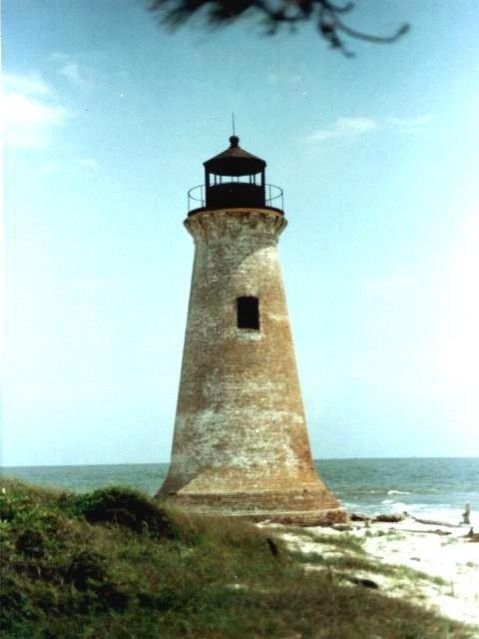
Although discovered in 1699, there was not much development until 1833 when the first wood lighthouse was erected. That structure was a perfect example of a ‘lesson learned’. Having been poorly constructed and very much too close to the water it was soon abandoned and designated to be torn down in 1854.
In 1849 Round Island became the home to about 600 mercenaries led by Venezuelan adventurer Narciso Lopez. Their mission was to free Cuba from the Spanish. The US Government was against the activities and had the island blockaded by US Naval ships to stop the action. The only time in history where the US blockaded our own soil. This action caused much anger between the Southern and Northern states and has been viewed by many historians as a precursor to the Civil War. The troops were eventually forced after about 6 weeks to leave, but not before much damage was done to the keeper house and outbuildings.
During the Yellow Fever outbreak of 1858, the island like many other barrier islands was used as a quarantine station in the hopes of limiting the spread of the disease.
The new and recently reconstructed brick lighthouse was built in 1859, at a cost of $7 -8 thousand dollars. The lighthouse was/is 50 feet tall and was topped with a Fresnel lens. Fresnel lenses were developed specifically for use in lighthouses. They are constructed of a series of annular steps of glass rendering them much lighter than traditional lenses and allows the light source to be seen for much longer distances.
The island was to be pummeled with numerous storms over the years. In 1860 the keeper and family were battered by a hurricane. While the rest of the island was being blown away they stayed in the lighthouse stranded for several days without food or water.
Round Island also played a part in the Civil War. During the years of 1861 – 1869, it was an outpost for blockade runners, smuggling cotton out of the south in exchange for guns and supplies that the Confederacy desperately needed.
Déjà vu in 1906 yet another hurricane destroyed the Keepers Quarters and outbuildings. The keeper again sought refuge in the lighthouse while the storm took all of his belonging and livestock.
1944 the lighthouse was decommissioned but still maintained by the Coast Guard until 1946 when the US Coast Guard discontinued the use of the lighthouse.
By 1986 the City of Pascagoula obtained ownership of 50 acres, the lighthouse, and attachments, and was responsible for having the lighthouse placed on the National Historic Register.
Then the final devastation was caused by Hurricane Katrina in 2005. The tower fell over and broke into large pieces looking like rubble, scattering bricks all along the beach. Then the determination was made to reconstruct the lighthouse in Pascagoula. As much of the original lighthouse as possible was salvaged and barged to Lighthouse Park at the foot of the East Pascagoula River bridge. Restoration continued from 2012 to 2014.
On November 13, 2015, the restored lighthouse, complete with a new Fresnel lens, opened officially to visitors at 815 Cypress Avenue, in Light House Park. Visitors can walk the 52 wooden stairs to the top, learn about the lighthouse from the tour guide, take luxurious strolls in the highly landscaped park. Although the tours were canceled for six months due to COVID-19, they are now operating on Friday and Saturday between 10 am and 5 pm.
You can also launch your boat at the adjacent area next to the park, and take a beautiful day to go explore our heritage Round Island. Enjoy the sun and sand.